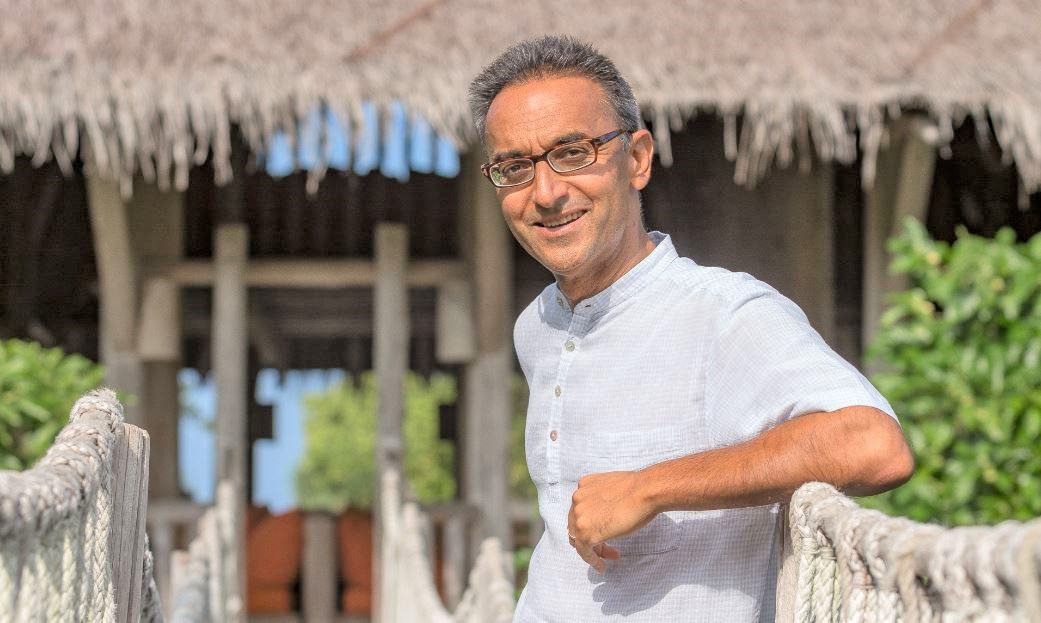

How to Live with COVID19 by Sonu Shivdasani
Saturday 13th of June 2020
How to Live with COVID19 by Sonu Shivdasani
Sonu Shivdasani, Founder and CEO of Soneva, has been in lockdown in his own luxury resort in the Maldives, Soneva Fushi, for four months with around 70 foreign guests, who chose to stay at the resort when the Maldives closed its borders. The country however, will be reopening on July and has announced the removal of lockdown implemented on April. This decision by the government makes it vital for us to learn how to live with COVID19.
“We mustn’t complain as lockdowns go down” - Sonu Shivdasani
Countries around the world implementing lockdowns has led to several environmental benefits. Clearer water, return of wildlife and vegetation are a handful of examples. At Soneva Fushi in the Maldives, Sonu met a two-meter long reef shark, the biggest one he has seen swimming so close to the shore. He says that in the Maldives, it’s the (harmless) sharks, dolphins and manta rays that are enjoying a holiday without humans.
However, for the majority of people, the economic and social costs of being locked down have been terribly high. According to Sonu, general lockdowns and international border closures – which are devastating huge chunks of the economy, and the lives and livelihoods of hundreds of millions of people – don’t make sense, when rapid testing, contract tracing, and good hygiene are so effective at preventing the virus’s spread -- and when the virus poses such a tiny threat to young and middle-aged people.
“One of the biggest obstacles to easing the lockdown is fear” - Sonu Shivdasani
Undoubtedly, the media has created more fear in our minds regarding this disease than necessary. Sonu provides some facts to reduce our intake of drama, and temper our fears of COVID-19:
⦿ Due to a misunderstanding of the true extent of the infection in China, initial projections of a 3-5% fatality rate were far too high.
⦿ Many countries vastly overstated their likely number of deaths. Uppsala University in Sweden, for instance, predicted 90,000 deaths in one month, but Sweden has had a total of 4,800 virus deaths to date.
⦿ Likewise, on the 29 March, Columbia University issued a report highlighting a need for 136,000 hospital beds in New York City. In the end, 12,000 sufficed.
⦿ According to recent research by the United States Biodefence and Countermeasures Center, the half-life of the COVID virus in mild conditions such as 75oF and 25% humidity is 18 hours. But when the temperature rises to 95oF and the humidity rate increases to 80% (conditions found in the Maldives and other tropical countries), the half-life reduces to 1 hour.
⦿ According to the United States Center for Disease Control (CDC), there are no documented cases of a person becoming infected from a surface contaminated with COVID-19. Yet, every hotel and resort mini-film I have watched about reopening – including our own – has footage of an employee diligently wiping down surfaces.
⦿ A Hong Kong study, involving an analysis of 7,324 cases in China, identified 318 distinct outbreaks, all but one of which occurred indoors. This suggests the risk of catching COVID outdoors is low.
Due to the low chances of death for those who are healthy and not old, the limitations of the virus’s spread, and the improvements in testing and treatment, we have the opportunity to return to (almost) normal, albeit with robust measures in place to protect vulnerable groups. However, he also notes that the importance of protecting vulnerable groups should not be taken lightly.
How do we start on the road to recovery?
To start with, we should maintain the personal hygiene habits that the virus has taught us, such as frequently washing hands, and following the traditional Asian courtesy of wearing a mask if you feel unwell. These habits will also reduce the incidence of other viruses such as seasonal flus and colds.
Above all, new investments in health infrastructure put in place over the past 12 weeks, such as more hospital capacity, extensive and rapid testing, and sophisticated contact tracing, means that blunt control tools, such as lockdowns, can now be relaxed before they destroy ever larger parts of the economy.
Then, we just need to work on our fear, which, in the final analysis, may have caused more damage than the virus itself.